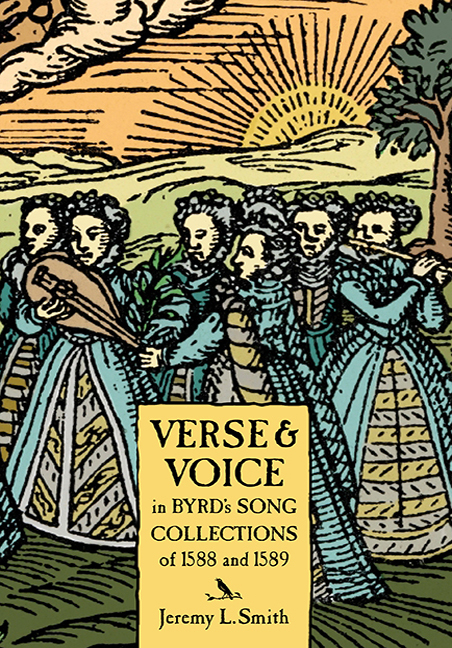Book contents
- Frontmatter
- Contents
- List of Figures
- List of Music Examples
- Preface and Acknowledgements
- Editorial Conventions
- Introduction
- CHAPTER 1 Psalmes
- CHAPTER 2 Sonets & Pastoralls, I
- CHAPTER 3 Sonets & Pastoralls, II
- CHAPTER 4 Sonets & Pastoralls, III
- CHAPTER 5 Songs of sadnes and pietie
- CHAPTER 6 Songs of Three Parts
- CHAPTER 7 Songs of Four Parts
- CHAPTER 8 Songs of Five Parts
- CHAPTER 9 Songs of Six Parts
- Conclusion
- Select Bibliography
- Index
- Studies in Medieval and Renaissance Music
Conclusion
Published online by Cambridge University Press: 05 July 2016
- Frontmatter
- Contents
- List of Figures
- List of Music Examples
- Preface and Acknowledgements
- Editorial Conventions
- Introduction
- CHAPTER 1 Psalmes
- CHAPTER 2 Sonets & Pastoralls, I
- CHAPTER 3 Sonets & Pastoralls, II
- CHAPTER 4 Sonets & Pastoralls, III
- CHAPTER 5 Songs of sadnes and pietie
- CHAPTER 6 Songs of Three Parts
- CHAPTER 7 Songs of Four Parts
- CHAPTER 8 Songs of Five Parts
- CHAPTER 9 Songs of Six Parts
- Conclusion
- Select Bibliography
- Index
- Studies in Medieval and Renaissance Music
Summary
WITH his setting of Amen at the end of “Christ is risen again” (BE 13: 47) Byrd brought a long story told through song to a stirring conclusion, evoking finally Christ's much-anticipated triumph over the devil and death with a resonant moment of intense counterpoint. To achieve this effect Byrd revised the last phrase of his original version as he prepared this particular section of music for publication. But, for all the special effort here, it is fair to claim that Byrd, as he brought each and every one of his songs to a close, was aware that in certain ways they had all “sh[o]ne brilliantly for the moment [they were heard in performance], only to fade entirely before the next” began. Aesthetically independent as well as practically unperformable in a continuous series, nearly every one of the eighty-two numbered songs in his two volumes develops its own theme, meditates on its own idea, or tackles its own problem, sometimes even when he casts it as a first, second, or third part of a multi-song set. Not only did Byrd accept these hermeneutic conditions, in his prefaces he actually promoted them, by encouraging auditors to treat his collections as miscellanies. That he went to some trouble to draw the very last of his Songs of sundrie natures to a close in a way that musically reflected back on others – including the set of seven penitential psalms with which the collection started – as discussed in Chapter 9, reveals, however, that he was so keen on building a single unified work that he quite overtly added a cyclic aspect to his complex structure, as the ending of one large unit draws us again to the ideas with which it began.
A number of Byrd's instrumental works, along with his towering sets of Gradualia, are made up of separable items and he was by no means alone in creating idealistic structures at the time. The 119 poems of Sidney's Astrophil & Stella sequence and Thomas Watson's Hecatompathia, or Passionate Centurie of Love, the latter with its extensiveness declaimed in its very title, assure us that others expected their auditors somehow to grapple with edifices so large that they could never be worked through in a single sitting, although individual units were invitingly short and closed.
- Type
- Chapter
- Information
- Verse and Voice in Byrd's Song Collections of 1588 and 1589 , pp. 283 - 294Publisher: Boydell & BrewerPrint publication year: 2016



